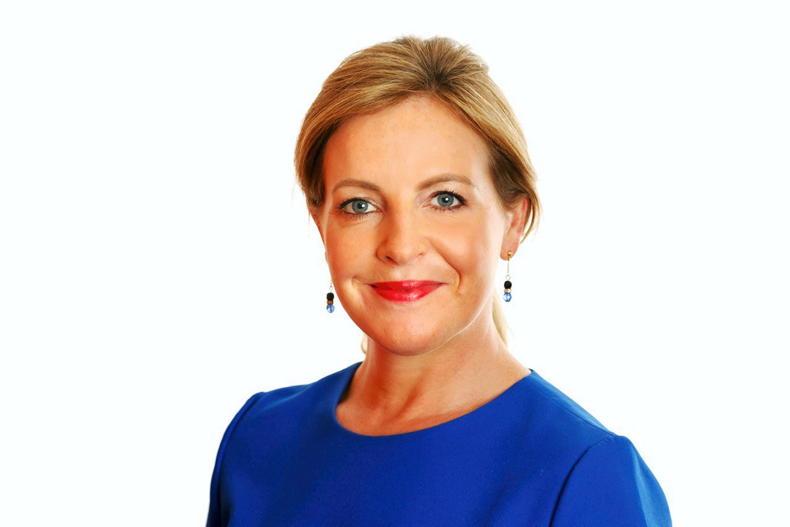Farm spouses are still regularly told that they are not entitled to a contributory State pension, despite having farmed alongside their partner for most of their lives.
This is because if an individual (usually the farm wife) is not officially paid for their work, they have not paid PRSI in their own name and cannot claim their own contributory pension.
Not being a paid employee on the farm, with a registered taxable income, can mean exclusion from other social insurance, too (like maternity and disability cover).
For younger women who are a while off retirement, the solution is to get on the farm payroll. That may be as an employee (if the family farm is incorporated as a limited company), as a partner, or as a self-employed contractor.
A good option there is to put a formal business partnership in place between farm spouses. But always get advice from an accountant on how best to split farm profit between you on your income tax returns. The tax return typically generates the Class S contribution towards a State contributory pension, and a financial adviser can ensure you both draw an income from the farm in a tax efficient way while also maximising contributions to State or private pensions.
Options approaching retirement
But what if you’re only a few years off retirement and reckon there is no prospect of making even the 10 years of paid PRSI contributions to merit the lowest rate of a contributory pension?
Those who have worked outside the home and farm at some stage and have the new social welfare card can check the PRSI contributions they do have on the MyGovID website. The PRSI records section in Donegal can also advise on this (they can be reached at 1890-690690).

Carol Brick is a qualified financial adviser (QFA) with an interest in the area of financial planning for Irish women.
If you don’t qualify in your own right, there is a means-tested benefit payment linked primarily to your spouse’s earnings. A farmer’s spouse can get a non-contributory pension payment as a ‘qualified adult’ under their spouse’s PRSI cover. However, this is a means-tested pension based on any income or assets the spouse or civil partner has.
The spouse of a farmer in this case is entirely reliant on the other person’s pension. And, they cannot get this non-contributory payment until their spouse is of pensionable age (66) which, of course, can be problematic if the individual is older than their PRSI paying partner.
Claiming partnership retrospectively
An alternative is to retrospectively prove a business partnership has existed between spouses on the farm under the Farm Spouses Scheme. When deciding on partnership status, the Department of Employment Affairs and Social Protection (DEASP) and the Revenue Commissioners examine your situation to see if some or all of the following apply:
There is a written partnership agreement (although not legally required).Each person writes cheques on the business accounts in their own right.There is a joint business account.A partnership is apparent to others doing business with the partnership.Each partner makes a significant contribution to the running of the business.The business is owned jointly by the partnership.The profits and losses of the partnership are shared by each partner.Supporting documentation for an informal partnership might include affidavits, invoices, letters from suppliers (like a local Co-op) or even herd numbers under joint names.
If some, or all, of these terms exist, the arrangement is likely to be viewed as a partnership by the social welfare inspector from the DEASP. The spouse can then pay Class S contributions retrospectively, with the amount worked out by splitting the income from the partnership.
The ‘Scope Section’ of the Department of Social Protection, Gandon House, Amiens Street in Dublin 1 administers the Farm Spouses Scheme (they can be contacted at 01-673-2585).
Check pension prospects
Before engaging with social welfare, however, it makes sense to assess what contributory rate of pension can be achieved, at best. There are multiple rates and other criteria can apply, too. Plus, the non-contributory pension as a “qualified adult” may end up being the higher option anyway.
There could also be consequences for the farmer’s pension if the farm profits reflected in his or her name, on assessing a spouse’s income, are higher than the PRSI threshold.
Many criteria need to be considered before applying to the Department of Social Protection, and both partners should ideally seek legal and financial advice first or contact the local Citizens Information Centre.
Carol Brick hails from a dairy farming background in Kilmoyley, Kerry, and is managing director of CWM Wealth Management Ltd. An economics graduate and qualified financial adviser, she has a particular interest in financial planning for women in Ireland and launched HerMoney, a specialist service, in 2017, with an all-female team of advisers. Carol advocates for urgent legislative change when it comes to the qualifying criteria for a State pension.
Read more
Finance: if you’re working on-farm, it’s important to be on the payroll
All you need to know about state pensions
Farm spouses are still regularly told that they are not entitled to a contributory State pension, despite having farmed alongside their partner for most of their lives.
This is because if an individual (usually the farm wife) is not officially paid for their work, they have not paid PRSI in their own name and cannot claim their own contributory pension.
Not being a paid employee on the farm, with a registered taxable income, can mean exclusion from other social insurance, too (like maternity and disability cover).
For younger women who are a while off retirement, the solution is to get on the farm payroll. That may be as an employee (if the family farm is incorporated as a limited company), as a partner, or as a self-employed contractor.
A good option there is to put a formal business partnership in place between farm spouses. But always get advice from an accountant on how best to split farm profit between you on your income tax returns. The tax return typically generates the Class S contribution towards a State contributory pension, and a financial adviser can ensure you both draw an income from the farm in a tax efficient way while also maximising contributions to State or private pensions.
Options approaching retirement
But what if you’re only a few years off retirement and reckon there is no prospect of making even the 10 years of paid PRSI contributions to merit the lowest rate of a contributory pension?
Those who have worked outside the home and farm at some stage and have the new social welfare card can check the PRSI contributions they do have on the MyGovID website. The PRSI records section in Donegal can also advise on this (they can be reached at 1890-690690).

Carol Brick is a qualified financial adviser (QFA) with an interest in the area of financial planning for Irish women.
If you don’t qualify in your own right, there is a means-tested benefit payment linked primarily to your spouse’s earnings. A farmer’s spouse can get a non-contributory pension payment as a ‘qualified adult’ under their spouse’s PRSI cover. However, this is a means-tested pension based on any income or assets the spouse or civil partner has.
The spouse of a farmer in this case is entirely reliant on the other person’s pension. And, they cannot get this non-contributory payment until their spouse is of pensionable age (66) which, of course, can be problematic if the individual is older than their PRSI paying partner.
Claiming partnership retrospectively
An alternative is to retrospectively prove a business partnership has existed between spouses on the farm under the Farm Spouses Scheme. When deciding on partnership status, the Department of Employment Affairs and Social Protection (DEASP) and the Revenue Commissioners examine your situation to see if some or all of the following apply:
There is a written partnership agreement (although not legally required).Each person writes cheques on the business accounts in their own right.There is a joint business account.A partnership is apparent to others doing business with the partnership.Each partner makes a significant contribution to the running of the business.The business is owned jointly by the partnership.The profits and losses of the partnership are shared by each partner.Supporting documentation for an informal partnership might include affidavits, invoices, letters from suppliers (like a local Co-op) or even herd numbers under joint names.
If some, or all, of these terms exist, the arrangement is likely to be viewed as a partnership by the social welfare inspector from the DEASP. The spouse can then pay Class S contributions retrospectively, with the amount worked out by splitting the income from the partnership.
The ‘Scope Section’ of the Department of Social Protection, Gandon House, Amiens Street in Dublin 1 administers the Farm Spouses Scheme (they can be contacted at 01-673-2585).
Check pension prospects
Before engaging with social welfare, however, it makes sense to assess what contributory rate of pension can be achieved, at best. There are multiple rates and other criteria can apply, too. Plus, the non-contributory pension as a “qualified adult” may end up being the higher option anyway.
There could also be consequences for the farmer’s pension if the farm profits reflected in his or her name, on assessing a spouse’s income, are higher than the PRSI threshold.
Many criteria need to be considered before applying to the Department of Social Protection, and both partners should ideally seek legal and financial advice first or contact the local Citizens Information Centre.
Carol Brick hails from a dairy farming background in Kilmoyley, Kerry, and is managing director of CWM Wealth Management Ltd. An economics graduate and qualified financial adviser, she has a particular interest in financial planning for women in Ireland and launched HerMoney, a specialist service, in 2017, with an all-female team of advisers. Carol advocates for urgent legislative change when it comes to the qualifying criteria for a State pension.
Read more
Finance: if you’re working on-farm, it’s important to be on the payroll
All you need to know about state pensions










SHARING OPTIONS